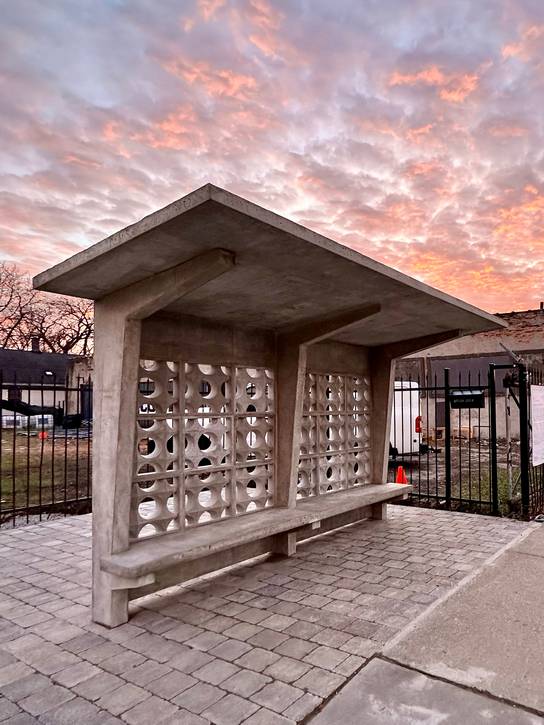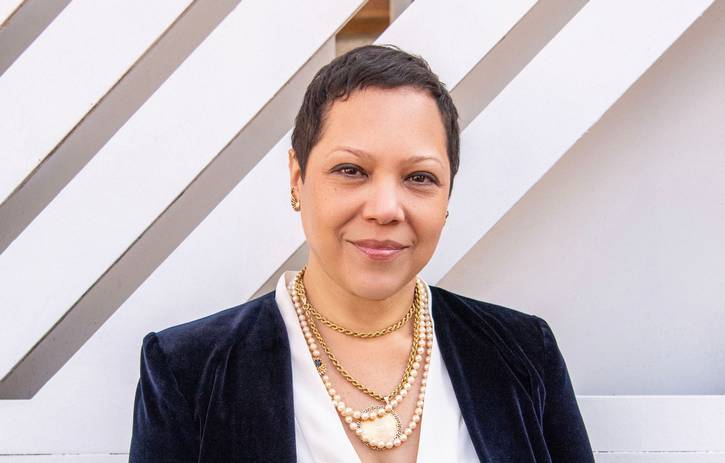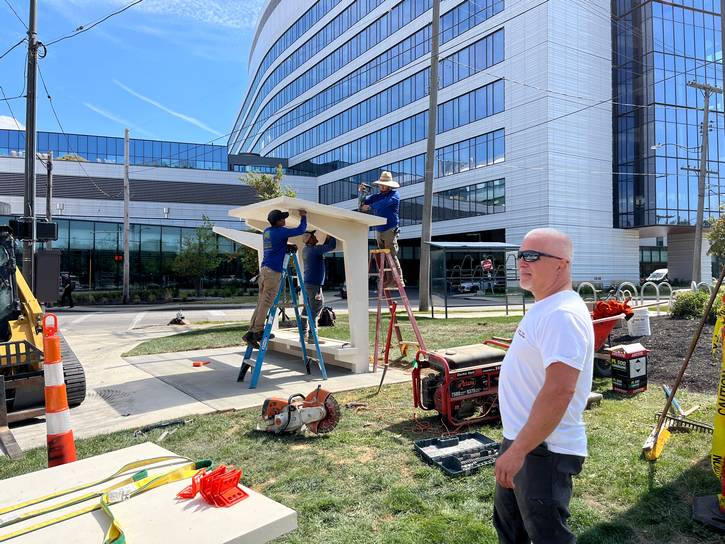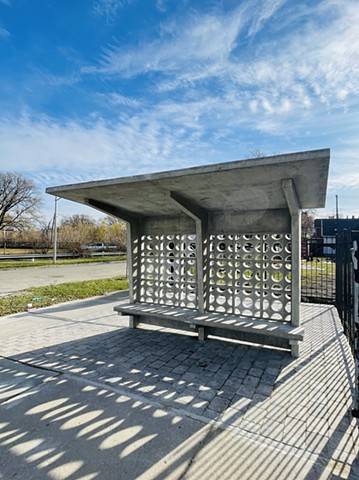When internationally acclaimed artist Edra Soto was growing up in Puerto Rico, she noticed the common, distinctive style of the island's homes and bus stops.
“Residential architecture in Puerto Rico for working-class communities consists largely of concrete houses with decorative concrete blocks and integrated decorative iron fences. [called rejas]Explains Soto. “I started researching the decorative motifs from the homes of working-class communities in Puerto Rico, which are like the type of house I grew up in and have.” [motif] integrated into the house, into the architecture.”
 The first installation of “La Distancia” in Chicago in 2023.Years later, these design styles became Soto's inspiration for the 2023 installation “La Distancia/The Distance,” which she created as part of the Floating Museum's fifth Chicago Architecture Biennial.
The first installation of “La Distancia” in Chicago in 2023.Years later, these design styles became Soto's inspiration for the 2023 installation “La Distancia/The Distance,” which she created as part of the Floating Museum's fifth Chicago Architecture Biennial.
Then, this year, through a partnership with The Sculpture Center and supported by the Joyce Foundation, Soto duplicated “La Distancia/The Distance” as a permanent outdoor sculpture and public bus stop for the Greater Cleveland Regional Transit Authority in the Clark-Fulton neighborhood.
Located across from MetroHealth Glick Center at Southpointe Drive and Scranton Road, La Distancia was dedicated on Thursday, September 18, in partnership with RTA and MetroHealth Hospital.
Soto says she sees bus stops as more than just a place to wait for transportation. She says she sees the shelters as an opportunity to explore cultural identity, belonging and the immigrant experience through public art. Soto moved to Chicago in 1998 at the age of 29 to earn her Master of Fine Arts (MFA) from the School of the Art Institute of Chicago.
“The project itself is a replica of an existing bus stop [from Puerto Rico]” she explains. “I made some minor changes to incorporate the decorative motifs I wanted to show.”
These motifs, or rejas, and concrete blocks that decorate the homes of the Puerto Rican working class have become a central part of Soto's artistic exploration of cultural identity and migration.
The patterns and concrete blocks that Soto has studied for more than a decade as part of her broader “Graft” project serve both practical and aesthetic purposes in Puerto Rican architecture.
“They are functional, mainly for ventilation,” she explains. “You see these decorative motifs everywhere. They are part of the human backdrop in architecture.”
 Internationally recognized artist Edra Soto.Additionally, Soto says the transplant is a kind of symbolic transplant related to immigration.
Internationally recognized artist Edra Soto.Additionally, Soto says the transplant is a kind of symbolic transplant related to immigration.
“I think about the importance of transplants as skin grafts, and then I start thinking about what it has to do with migration and finding ways to navigate,” she says. “Things like being outside your home and belonging, which artists deal with deeply, are strange.”
She adds that finding a sense of belonging in a foreign country can be daunting. “America is made up of immigrants,” Soto observes, “but we come to the United States and feel like we don’t really belong.”
Soto says the architectural components of Puerto Rican architecture and design often translate into cultural identity. She points out that tourists flock to cultural and historical landmarks like El Morro in San Juan, and she sees the everyday architecture of working-class communities as equally important to the island's heritage.
“I'm starting to think about the decorative motifs seen in the homes of working-class Puerto Ricans as an important type of architecture that represents working-class communities in Puerto Rico,” she says.
La Distancia includes a digital diary, accessible via a QR code at the shelter, containing essays, poems and artwork created during community workshops in Cleveland on the topic of migration experiences.
Local artists were invited to present their work for a group exhibition in the bus shelter.
“The diary was created through writing workshops – with a focus on migration and memories of migration,” explains Soto. “You can really feel Cleveland’s presence in the magazine.”
In addition to providing protection from the elements, La Distancia features built-in seating designed to provide community members with a place to rest and gather – often a rare feature in modern urban design.
 Montage of Edra Soto's “:La Distancia” across from the MetroHealth Glick Center.“Sometimes it's strange that you're in a public place and there's no place to sit,” Soto notes, adding that public art projects like La Distancia are points of connection and collaboration. The project required coordination between architects, engineers, manufacturers and community organizations.
Montage of Edra Soto's “:La Distancia” across from the MetroHealth Glick Center.“Sometimes it's strange that you're in a public place and there's no place to sit,” Soto notes, adding that public art projects like La Distancia are points of connection and collaboration. The project required coordination between architects, engineers, manufacturers and community organizations.
“Public art is all about collaboration with one or more communities,” she says, adding that she is honored by the teamwork that went into the installation.
Soto hopes the permanent installation will be a testament to the immigrant experience and the ways in which cultural identity can be expressed through public spaces. She says she sees La Distancia as both a practical shelter and a symbolic refuge – a place where Cleveland's diverse communities can meet while experiencing a piece of Puerto Rican cultural heritage.
